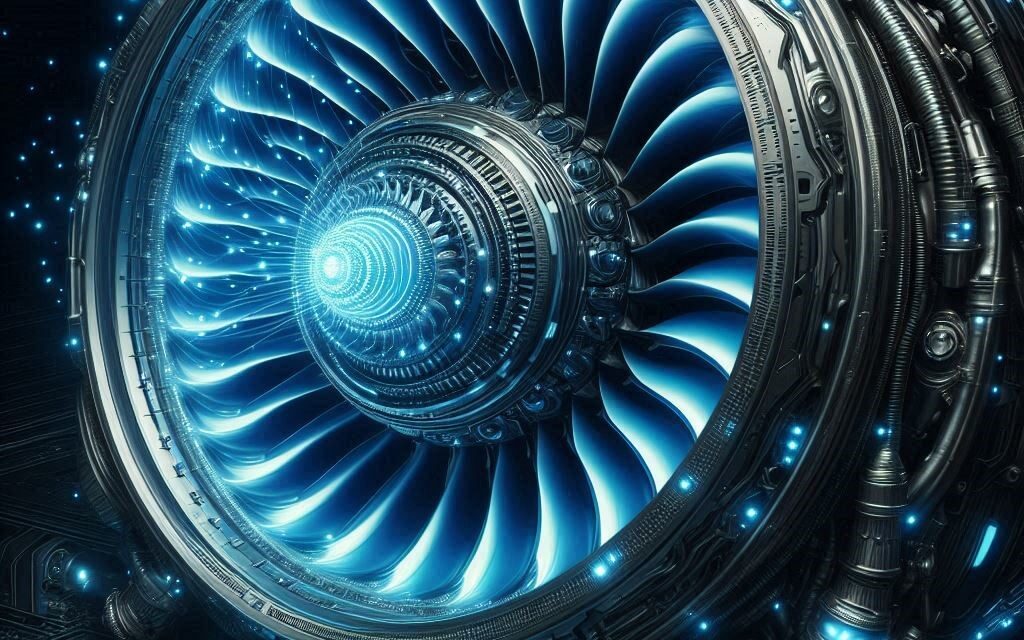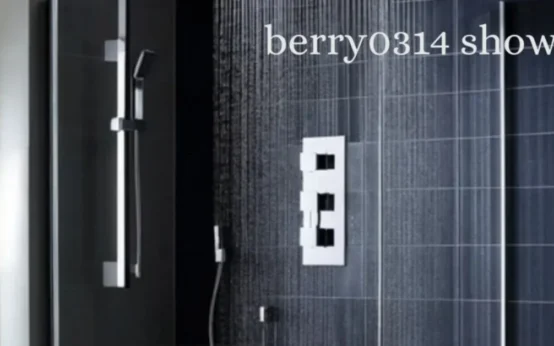Introduction to Pratt and Whitney Blue-Helix Technology
The aviation sector is set for a significant transformation, with the Pratt and Whitney Blue-Helix technology at this development’s centre. This new invention promises to change the very definition of engine performance whilst also boosting fuel consumption efficiency. As airlines look for ecological solutions to the growing environmental problem, Blue-Helix appears to be the answer for the aviation industry. With every innovation in this technology, the day when sustainability and aviation come together becomes imminent. It is time to discuss Pratt and Whitney Blue-Helix’s impact on present-day air travel for airlines and travellers. The sky is not the limit; it is only the beginning!
How Pratt and Whitney Blue-Helix Improves Engine Efficiency
Most importantly, the technology ventilates and feeds future aviation fuel sources. This allows efficient energy and resource utilisation, something Pratt and Whitney, as a manufacturer and the aviation industry as a whole, has always struggled with. Their new take also introduces new pathways for harnessing efficient fuels.
With the busing of these lighter materials, new components of jet engines and their usability can be enhanced. In collaboration with further innovations in combining airflow dynamics, alterations in Pratt and Whitney Blue-Helix components can drive upward power of engines without draining fuel usage. In addition, this would enhance fuel efficiency and draw many sophisticated customers towards Pratt and Whitney. Hence, they focus on getting their geometry and wires around the Blue Helix system right.
Another benefit is real-time data processing, brought about by incorporating smart sensors. Hence, engine performance is always available for monitoring and optimising on small scales to make fuel combustion more efficient.
Airlines can save on costs and be compliant with environmental policies due to reduced emissions now resulting from the improved combustion processes of the engines. The combined efficiency objectives keep Pratt and Whitney at the cutting edge of the sustainable aviation market.
The Innovative Technology of Blue-Helix
Pratt and Whitney Blue-Helix is the next-generation technology in aviation. It is based on new materials and modern manufacturing technologies. A lighter and more durable engine design enhances overall performance.
One of its interesting elements is its peculiar modularity. This makes upgrading and servicing procedures quicker for airlines, as less downtime is required. Engineers can replace parts without changing the entire system.
Moreover, Blue-Helix has now enhanced the aircraft engine with digital twin technology for more efficiency. Engineers can calculate what should work in real-life situations and what would not so they can flag the potential problem beforehand. It is a matter of ensuring everything is safe and working well before use.
The use of AI also tremendously contributes to all the above. Insights derived from AI analytics on engine performance make it possible to make decisions that would lead to operational optimisation.
Integrando estas características avanzadas, Pratt and whitney la posiciona como un lider en sostenibilidad de la tecnologia de la aviacion, al abrir camino para cielos mas limpios a traves de una innovadora ingenieria.
How Pratt and Whitney Is Shaping Modern Aviation Trends
Pratt and Whitney has been changing how modern aviation trends operate. Their Blue-Helix technology is proof of how advanced technologies can increase the efficiency and sustainability of jet engines.
While airlines are under increasing constraints for green alternatives, this technology becomes useful. It enables greater fuel while optimising emissions, which is reasonable for the environment.
In addition, Pratt and Whitney do not hesitate to work with industry stakeholders and incorporate necessary innovative technologies into their engines. This allows for a shift in methods as it allows data analysis in real-time, resulting in maintenance and operation reliability changes.
The modular construction also shows their innovative speed. These changes allow modernisation without changing the whole airframe, ensuring aircraft are always up to date during their usage.
By innovating and improving aviation engines and focusing on the core point of sustainability, they are surely bringing more trends rather than following them. The impact of Blue-Helix technology will be felt in every aviation area for quite a long time.
Challenges and Limitations Pratt and Whitney blue-helix
The concept of Pratt and Whitney Blue-Helix technology is creative but has associated challenges. One of the main challenges is adding advanced materials to the new engine designs. This is particularly concerning as much testing must be done to warrant safety and performance.
Another limitation is modifying existing manufacturing procedures. For some manufacturers, applying new technologies can be a long and expensive process.
Moreover, regulatory approvals are also relatively delicate and must be handled cautiously. Every new development must pass elaborate tests and checks before it is allowed in commercial operations.
Also, readiness to use the market differs from one airline to another or regionally; not all operators are ready or willing to pay for new solutions immediately. This difference may delay any rate of everyday use of new technologies.
The market is as competitive as all the other players in the aerospace industry. Competitors are increasingly competing to develop their technologies, leaving Pratt and Whitney with no choice but to adjust to the above challenges while retaining its competitive edge.
The Role of Pratt and Whitney Blue-Helix in Shaping the Future of Aerospace
Needless to say, Pratt and Whitney Blue-Helix is an advancement in technology and a game changer in how we view aerospace technologies. This novel engine technology works quite well with the increasing demand for a solution to the problem of sustainability in aircraft operations.
The Blue-Helix substantially decreases carbon emissions through improved fuel economy. The airline industry can operate efficiently and with minimal effect on the ecosystem; thus, this technology is more a requirement than a value addition scope.
In addition, Blue-Helix is an engine that drives growth in different areas of the industry. Its design encourages engineers and manufacturers to work together throughout the world.
As new materials and processes become available from this innovative platform, they can be utilised across various aircraft types. The cascading effect of such progress enhances international competitiveness and sets the stage for future advances.
According to many experts, Pratt and Whitney Blue-Helix promises to change the way operations are conducted, which means that we are entering a new fascinating chronological period in terms of engineering avionics.
What’s Next for Blue-Helix Technology and Its Evolution?
The future of Pratt and Whitney Blue Helix technology is beyond exciting. As engineers continue to come up with new ideas, significant developments should also occur. Perhaps the attention will shift to improving materials that withstand and function at extremes of heat and pressure.
Additive manufacturing research could be a game-changing aspect of evolution. The union of simple, lightweight parts with highly elaborate and intricate structures may construct entirely new dimensional construction of engines.
Furthermore, sustainability is very much at the centre, too. The use of biofuels together with conventional jet fuel could become regular practice, thereby drastically decreasing carbon emissions.
If Blue Helix technology is to be taken to the next level, working with the players in the aerospace ecosystem will be necessary. From a business perspective, cooperation could speed up its uptake on other aircraft platforms, potentially enabling airlines to realise better efficiency and lower operating expenses when using the new technology.
Also, expect more evolution in the area of digital twin technologies, which promise the capability of monitoring engines in real time and predicting maintenance activities to maximise efficiency across an engine’s whole lifespan.
How Pratt and Whitney Blue-Helix is Paving the Way for Next-Gen Engines
Pratt and Whitney Blue-Helix is changing the way engine designers approach engine design. Its advanced architecture is game-changing because it focuses on efficiency and sustainability, critical aspects of the modern aviation sector.
The Blue-Helix engine configuration is modular, allowing for endless engine design flexibility. This means that manufacturers don’t have to rework the engines to fit other aircraft.
Furthermore, the Blue Helix introduces new materials that can absorb heat but help keep the weight low. Lighter engines consume less fuel and emit fewer gases, which contributes to pollution and helps meet global warming goals.
Digitisation changes how every industry functions and predictive maintenance is integral to this text. Analysing in real time allows problems to be contained before they arise, improving reliability and overall fleet performance.
When the rules in the market change due to the change in demand, it is paramount to have an edge. Having an innovative perspective puts one at the forefront of creating the propulsion systems of the future—something that Pratt and Whitney have gotten right. Their optimism is warranted, as they can apply their technology to more platforms worldwide.
Global Adoption of Pratt and Whitney Blue-Helix: What It Means for Airlines
The global market is on the rise, and with that understanding, the Pratt And Whitney Blue-Helix is sure to change how airlines operate around the globe. This novel engineering paradigm needs to optimise the engine band to conserve the sustainability aspect that the industry is leaning towards.
Adopting Blue-Helix will result in changes in fuel consumption for airlines that do so. This translates to cheaper running costs, which benefits both the airlines and the passengers.
The transition to this advanced technology clearly shows that the airline has decided to act environmentally friendly. Airlines adopting Blue-Helix are most likely to attract more eco-friendly clients while complying with emission reduction requirements.
Further, Blue-Helix engines come in modules that are easier to service and repair and thus provide a quick return to service. This efficiency results in better accessibility of United States aircraft—something very important in today’s highly competitive market.
Airlines that use this outfit technology place themselves at the forefront of the changing world focused on technology and environmental safety.
Angelicatlol Facial Insights: Lessons for Aerospace Innovations
The AngeliCatLol Face Insights combine well with aerospace innovations. This is a combination of two components: facial recognition and artificial intelligence, which allows you to remember such events in an image.
Addressing the human factor in aircraft flight and maintenance is essential. By analyzing facial actions and emotions during flight, engineers can design an interface that is less complex for pilots to operate.
Safe to say, if a pilot were stressed, an aircraft would instantly reflect that stress as safe to fly and hence less likely to take action.
Applying this to aircraft cabins may also improve passengers’ flights. For example, air travel can be revolutionised when passengers’ comfort signals shape the lighting and sound.
A particularly interesting area appears to be the incorporation of AI facial analysis into the construction of aerospace systems. Engineers search for such combinations, and aviation will most likely have a positive future.
Conclusion: The Exciting Possibilities for Aviation with Blue-Helix Technology
With the development of Pratt and Whitney blue Helix technology, an aircraft powered by an engine incorporating this technology will definitely take aviation technology to another level. This novel approach to engine styles not only improves effectiveness but also takes measures aimed at the global goal of decreasing the carbon footprint in the air transport business.
Blue Helix represents a tremendous opportunity as airlines struggle to streamline operations and reduce costs. The possibilities of engineering principles would drive the development of next-generation engines with better dependability and performance characteristics. The repercussions of these alterations on flight times, fuel utilisation and total cost of operation could be revolutionary.
Evolving technology offers plenty of room for improvement and an interesting direction in the aerospace domain. Looking ahead, we can expect expectations that can change and describe the faces of the aviation industry now and in the future.
Introducing Mr. Blue Helix to aircraft fleets across the globe will most likely influence airline and passenger practices. As COVID strengthens the concept of forcing into the open idea of forming new products for the real needs of humanity in this new era of uncontrolled innovations directed to save the world instead of satisfying ourselves, Mr Blue Helix shows the skies of the future where flying is green and cheap.
Pratt and Whitney Center is the sky, and it must have a cutting-edge outlook for an organisation focusing on the new age. Pratt and Whitney have never made new prams. The range is vast—welcome in. I prepare the advancements in the aviation space that help the system—aircraft manufacturers, travellers, and everyone.

 Unlocking the Secrets of 855-622-6743: Your Ultimate Guide to [Service Name]
Unlocking the Secrets of 855-622-6743: Your Ultimate Guide to [Service Name]  The Ultimate Guide to Berry0314 Shower: Elevate Your Daily Routine with Luxury and Innovation
The Ultimate Guide to Berry0314 Shower: Elevate Your Daily Routine with Luxury and Innovation  935358726: The Ultimate Guide to Unique and Unforgettable Experiences
935358726: The Ultimate Guide to Unique and Unforgettable Experiences  Lesbufy: The Ultimate Guide to the Emerging LGBTQ+ Video Platform
Lesbufy: The Ultimate Guide to the Emerging LGBTQ+ Video Platform  Vaaja Technologies: Leading the Way in Modern Tech Solutions.
Vaaja Technologies: Leading the Way in Modern Tech Solutions.  Immediate Serax V3: The Ultimate Guide to Stress Relief and Enhanced Focus
Immediate Serax V3: The Ultimate Guide to Stress Relief and Enhanced Focus